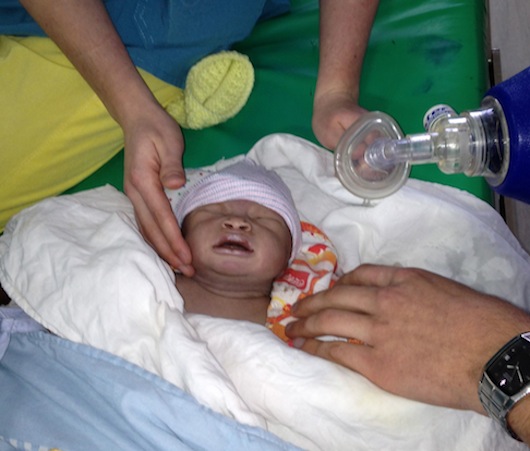What’s the most vulnerable minute in person’s entire life? The very first minute following birth. During those few seconds the baby must transition from receiving oxygen from the mother via umbilical cord to clearing its own airways, starting respiration, and quickly shunting blood to lungs for the first time. Many children fail to survive these hazardous moments – especially in locations where medical care is not readily available. For this reason, INMED makes Helping Babies Breathe training widely available to our participants.
Yesterday I witnessed Helping Babies Breathe in action. Teresa was 38 weeks pregnant and presented at Lubango Evangelical Medical Center with premature rupture of membranes two or three days earlier. This breaking of the protective membranes puts her baby at risk of infection. Her baby in this photo delivered a few hours later. Why is this baby’s face is pale and the facial muscles relaxed? Because he is not breathing!
Per Helping Babies Breathe protocol we rapidly dried this baby, sucked the excess fluid from his mouth and nose, and initiated ventilation with a bag and mask. The result was readily apparent: Baby’s chest rose and fell with each ventilation, and his heart rate remained rapid and strong. Most of the time this straightforward resuscitation will jump start a baby’s natural rhythm of respiration. Unfortunately our baby was likely already infected from the premature rupture of membranes. After two hours of bagging his heart finally stopped.
Chest fallen? Indeed we are. But the up shot is that babies lives are usually saved through Helping Babies Breathe techniques. INMED HBB courses are available several times each year.

